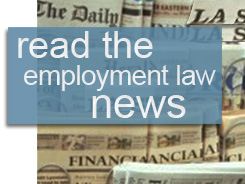
H-1B and E-3 Work Visas
The H-1B is a temporary work status for "specialty occupations." Specialty occupations are ones that require "the application of a specialized body of knowledge." To qualify, the job must require a minimum of a bachelor's degree and the worker must have a minimum of a bachelor's degree, subject to some exceptions.
An H-1B worker may work in the United States for up to three years on the initial approval, and may work in the United States for a maximum of of six years. Periods when the worker is not inside of the United States do not count as periods in H-1B status. It is therefore possible to "recapture time" by filing an H-1B petition that documents worker's periods abroad and asks USCIS to add them to the six years running from the initial entry in H-1B status.
Filing Fees
The I-129 base filing fee is $325. USCIS requires a $500 filing fee for initial H-1B and L-1 petitions for a new employee (but not for extensions of status for the same employee). H-1B petitions also require a US worker training fee that is $750 for companies with fewer than 26 full-time equivalent employees and $1,500 for companies with 26 or more full-time equivalent employees. The employer must pay the US worker training fee for the first two H-1B petitions for the same employee - the initial petition and the first petition to extend status. The employer does not need to pay the US worker training fee for the second petition to extend status (which is the third petition the employer files for the same employee). There is an aditional fee of $2,000 for employers with 50 or more employees who have 50% or more of their US employees in H-1B or L-1 status (this fee will end on October 1, 2015 if Congress does not extend it). Also, employers that want premium 15 calendar day processing may pay an additional $1,225 filing fee and file form I-907 to receive premium processing service - USCIS will then issue a decision or RFE within 15 calendar days.
E-3 Work Visas
The E-3 visa is similar to the H-1B visa except that: (1) spouses of E-3 visa holders may work in the United States without restriction, (2) the E-3 visa is renewable indefinitely in two-year increments, and (3) E-3 visa are not subject to the H-1B visa cap, although they are subject to a separate annual quota of 10,500, and (4) E-3 visa applications do not require the petitioner to first file a petition with USCIS. The E-3 quota has never been reached, so Australian nationals and companies enjoy a significant advantage.
Visas issued to spouses and children are not counted against the E-3 quota and spouses and children of E-3 workers do not need to be Australian citizens to obtain visas as E-3 dependents. Allowing petitioners to file directly with the US consulate or embassy abroad instead of first filing a petition with USCIS saves time and money. Processing delays can reach three or four months at USCIS. Because of this many petitioners pay an additional $1,225 premium processing fee in addition to the $325 base filing fee to ensure 15 calendar day processing. The E-3 eliminates these additional costs and delays for job candidates residing abroad.
The Annual Quota or "Cap"
Congress set a quota of 65,000 H-1B petitions per fiscal year. The federal government's fiscal year begins on October 1, so the H-1B quota is replenished each October 1 on the first day of the government's new fiscal year. There is a separate additional quota of 20,000 H-1B visa numbers for workers who earned a master's or higher degree from an accredited US college or university.
Only "new" H-1B petitions are subject to the annual quota or cap. When a company files to extend an H-1B worker's status, that petition is not subject to the cap and is not counted against the quota. When an H-1B worker changes employers and the new employer files an H-1B petition, that petition is not subject to the cap and is not counted against the quota.
USCIS may count an H-1B worker against the cap only one time unless that worker departs the United States and remains outside for at least one year. So even unemployed H-1B workers are not subject to the quota and not counted against the cap unless they have left the United States and remained outside for one year or longer. An H-1B worker who changes to F-1 status and studies for four or six years and then travels abroad for six months is still not subject to the cap and should not be counted against the quota because he did not depart the United States and remain outside for one year or longer.
INA 214(g)(4) directs that an H-1B worker may not remain in the United States for more than six years and section 214(g)(7) provides that USCIS should not count a foreign national already counted against the cap against it again unless he would be eligible for another full six year period of H-1B stay. The law does not say a foreign national who held H-1B status and then spent a year outside the United States must elect to be subject to the cap and seek a new six years of H-1B stay. The December 5, 2006 Michael Aytes Memo directs USCIS officers to permit H-1B beneficiaries who have remained outside of the United States for more than one year since they last held H-1B status to choose between seeking a new six year period and being subject to that fiscal year's quota, or to use the unused remainder of H-1B status toward the six year maximum stay and not be subject to the quota and potentially the H-1B lottery.
Dependents
An H-1B worker's spouse and minor children may obtain H-4 status for the same length of stay as the H-1B worker. These H-4 dependents may study full or part time without changing to F-1 or M-1 status, but may not work without authorization. An H-4 dependent's status is not automatically extended just because the principal H-1B worker extended his, or her status. Many H-1B workers mistakenly believe that their spouses and children do not need extensions of status only to learn later that the spouse is out of status and may be subject to severe immigration penalties, sometimes including a ten year bar to reentering the United States.
Unlike the dependents of E and L workers, the dependents of H-1B workers may not work in the United States unless they receive some separate permission based on their own qualification, for example by finding an employer that will file an H-1B petition for them.
USCIS's position is that H-4 dependents do not have to file an I-539 amending their status when the H-1B worker changes employers. However, this position was announced in a December 28, 1995 letter from Yvonne M. LaFleur, Chief of the Nonimmigrant Branch of INS to a Florida immigration lawyer. It does not carry the force of law like a formal agency rulemaking or an administrative court decision. But it would be, to say the least, embarrassing for USCIS to abruptly change position on this without issuing at least some sort of notice or rulemaking.
The Degree Requirement and Substituting Experience
To qualify without a bachelor’s degree, a worker must possess at least three years of progressive related experience, or education for every one year of education normally required through the bachelor’s degree. Generally, USCIS counts a bachelor’s degree in some unrelated subject as two years of education because only two years of the program focus on the major. Thus, candidates with an unrelated bachelor's degree should possess at least six years of progressive, related experience, and candidates without bachelor degrees should possess at least twelve years of progressive, related experience. Progressive experience is generally defined as holding positions of increasing complexity and responsibility over a period of time. Related experience is obviously experience related to the job the employer seeks to fill with this worker.
The most reliable way to comply with this requirement is to obtain an evaluation from an official who has authority to grant college-level credit for training and/or experience in the specialty at an accredited college or university that has a program for granting such credit based on an s training, or work experience. 8 CFR §214.2(h)(4)(iii)(D). USCIS has a history of inconsistently applying this regulation and will sometimes accept an evaluation from an education evaluation service that evaluates experience even though the regulations do not allow this. Often USCIS will accept an evaluation from a professor who has the authority to grant college-level credit, but not for training or experience and not at a college, or university that has a program for granting experience-based academic credit.
The other option is to allow USCIS to make a deterimination by considering your submitted evidence of:
- Recognition of the candidate's expertise in the specialty occupation by at least two recognized authorities in the same specialty occupation;
- Membership in a recognized foreign or United States association or society in the specialty occupation;
- Published material by or about the candidate in professional publications, trade journals, books, or major newspapers;
- A foreign license to practice the specialty occupation; or
- Achievements which a recognized authority has determined to be significant contributions to the field of the specialty occupation
Leaving this evaluation to USCIS creates risks of delay and an unpredictable outcome. It is wise to obtain
Is My Job a Specialty Occupation?
The statute lists certain jobs as specialty occupations: foreign law advisors, scientists, librarians, psychologists, financial analysts, systems analysts, teachers, professors, journalists, editors, technical publications writers, management consultants, and market research analysts. But most H-1B eligible jobs are not named in the law.
To show that the position is a specialty occupation, the employer must explain why the specific job is one that normally requires a minimum of a bachelor's degree for a worker to minimally perform the job's duties. If the employer requires a highly skilled employee for a position not recognized as a specialty occupation, the employer may prove that the position nonetheless requires a specialty worker. In making its determination USCIS considers several questions:
- Is a bachelor's degree or higher in a specific field is the entry-level requirement for the position to be filled?
- Does the industry impose that degree requirement in parallel positions among similar companies?
- If the degree requirement is not a standard practice in the industry, can the employer show that the particular position is so complex or unique that a degree is required?
- Is the employer's normal requirement for the position a degree?
- Is the position's complexity is usually associated with the attainment of a degree?
- Is the level of responsibility and authority the position confers is usually associated with professional standing?
A good place to research Department of Labor's position on minimum academic and experience qualifications for certain types of jobs is the O*NET database. USCIS often relies on O*NET, so its wise for petitioners in this situation to take a look.
Wage Requirements
The employer must pay an H-1B worker the higher of the prevailing wage or the actual wage. The prevailing wage is the mean wage for similar jobs in the same Metropolitan Statistical Area (MSA). MSAs are usually counties. The actual wage is the mean wage that the sponsoring employer pays to other employees in the same occupation in the same MSA.
The Labor Condition Application
To file an H-1B petition, the employer must first file a Labor Condition Application with the US Department of Labor. This ETA 9035 form include "attestations" or promises under penalty of perjury that:
- The employer will pay the specialty worker the higher of the prevailing wage and the actual wage for the position
- The employer will give the H-1B worker a copy of the labor condition application by the first day of work
- The employer will post the labor condition application in two conspicuous locations at the site where the H-1B worker will work
- The employer will maintain a "public access file" in which it will keep certain required documents and make them available to any member of the public upon request
- The alien’s employment in the occupation listed will not adversely affect the wages and working conditions of similarly employed US workers
When a New Labor Condition Application Is Required
An H-1B employer is required to file an H-1B amendment whenever the employer must file a new labor condition application. A new labor condition application (LCA) is required when there is a material change in employment, which usually includes:
- A significant change in job duties
- Any reduction in pay regardless of amount
- A significant increase in pay
- Moving to a worksite not within the area of intended employment
- Any material increase or decrease in hours worked
Department of Labor published a good FAQ on this issue
in 2009 that you can read here
Department of Labor modified the ETA 9035 labor condition application in 2009 to require employers to list precise worksite addresses. The old ETA-9035 asked for the city and state where the worksite was located, but not the worksite address. The new form's request for worksite addresses has caused some confusion. Is a new LCA required when a worker changes worksites within the "area of intended employment" or when the worker changes worksites? What if an H-1B worker moves from one worksite to another that is within the "area of intended employment" listed on the LCA, but not a precise worksite located in the LCA?
Department of Labor has taken the position that an LCA covers work at any worksite within the area of intended employment and a new LCA is not required when moving a worker from one worksite to another within the area of intended employment. Area of intended employment is defnied as an area within normal commuting distance, which tends to be counties, but sometimes areas overlapping or within counties.
What about additional worksites outside of the LCA's area of intended employment? There are two types of worksites under the Department of Labor's labor condition application regulations: a "worksite" and a "non-worksite." If the H-1B worker will work at a non-work site, a new labor condition application is not required. The Department of Labor defines non-worksites as relating to the following employment situation:
- The job requires frequent travel to client sites or other locations and the H-1B worker does not spend more than five consecutive workdays at the same off-site worksite on any one trip;
- The H-1B worker sometimes travels to other off-site worksites, but works mostly at the worksite listed in the labor condition application and the worker does not remain at any one off-site worksite more than ten consecutive workdays on any one trip; or
- The temporary work at the third-party worksite is to attend, but give conferences, trainings, seminars or meetings.
If the H-1B employee's temporary placement at a worksite not listed in the H-1B petition does not fall into any of the "non-worksite" categories above, the H-1B employer may still be excused from filing a new LCA if the transfer qualifies as a short-term placement.
An H-1B employer may send an H-1B worker on short term projects to worksites not listed in the labor condition application. The short term projects cannot cumulatively exceed 30 days in a one year period (either the calendar year or employer's fiscal year) and the following conditions must be met:
- There is not a strike, lockout or labor dispute in the same occupation at the temporary work location;
- The employer continues to pay the H-1B employee the required wage, which is the greater of the H-1B prevailing wage at the permanent work location or the actual wage paid by the employer to similarly situated workers; and
- The employer must pay for the H-1B employee's actual costs of travel, lodging, meals and incidental expenses for weekdays and weekends.
An H-1B worker may work at locations not listed on the LCA for up to 60 days cumulatively in one year if the worker:
- Maintains a permanent office at the worksite listed in the LCA;
- Spends a substantial amount of time at the permanent work location during the one year period; and
- The worker's primary residence is in the area of the permanent work location.
If the H-1B worker's offsite assignment exceeds 30 days in the one year period (or 60 days if the worker meets the 60 day rule's requirements), the petitioner must file an amended H-1B petition with a new labor condition application. And if the H-1B worker's assignment does not qualify under one of the described above, the petitioner must file an H-1B amendment with a new labor condition application.
H-1B Dependency Under ACWIA
President Clinton signed a bill into law in October 1998 that raised the annual allotment of H-1B visas requires additional attestations of employers who willfully violated the requirements of an LCA as well as those deemed to be H-1B dependent. An H-1B dependent employer is one that has at least 51 employees and at least 15% of its total workforce comprised of H-1B workers. But companies with 25 or fewer employees are not deemed H-1B dependent if they employ seven or fewer H-1B workers, and companies with 26-50 employees are not deemed H-1B dependent unless they employ more than 12 H-1B workers.
New Attestations
The new law requires three new attestations, two of which apply only to the types of employers listed above. The first attestation is that the employer will offer the H-1B employee the same benefits and eligibility for benefits that it offers to similarly situated employees. This attestation applies to all employers filing H-1Bs. The second attestation affirms that the employer will not displace a United States worker from an essentially equivalent job during the period beginning 90 days before and ending 90 days after the alien's period of employment. The third attestation affirms that the employer has taken good faith steps to recruit United States workers for the same position the H-1B worker is to fill. It also provides that the employer advertised the job using industry-wide standards that offered compensation at least as great as that to be offered the H-1B applicant. Finally, this attestation requires H-1B employers to affirm that they actually offered the job to any United States worker with the same or better qualifications as the H-1B applicant.
The Department of Labor's review of the application is strictly limited to obvious inaccuracies and the law requires DOL to certify LCAs within seven days of filing. But DOL is taking substantially longer than seven days to process these applications. DOL expects these delays to improve somewhat in the coming year.
The employer must keep LCAs, prevailing wage determinations and actual wage determinations on file during the entire period of the alien’s employment.
When to File an H-1B Petition
An employer filing for a new H-1B worker must not file more than six months before the date of commencement of work. Employers may not file to extend an H-1B worker's status until six months before the worker's current H-1B status will expire.
An employer must file a new H-1B application if there is a material change in the employment. USCIS considers some changes to employment immaterial and not requiring a new H-1B petition:
- Promotion to a higher position within the same occupation,
- Transfer to a new work location covered by the same Labor Condition Application, or
- A change in ownership where the new owner assumes substantially all of the assets and liabilities of the previous employer
Material circumstances requiring a new H-1B petition include:
- Transfer to a worksite location not listed on the H-1B petition, or the labor condition application filed with it,
- Any reduction in pay
- A material change in duties, meaning one where the worker's duties are significantly different than as earlier described
An employer's failure to file a new H-1B petition when one is required can result in severe penalties for both the worker and the company.
Multiple Worksites
Some companies operate using a business model that requires programmers, business consultants, auditors, engineers, or other types of workers to periodically work at client sites. The law allows an H-1B worker to work offsite for a total of 90 days cumulatively each three years. For any period of time longer than that, the H-1B petition must list the worksite address and be supported by a valid labor condition application listing the worksite location.
Many of the largest consulting firms in the United States face this problem and many avoid it. The best way to comply with the law's requirements is to file a new labor condition application and a new H-1B petition each time the employee moves to a new worksite that was not known, or disclosed at the time the previous H-1B petition was filed. For employees who move worksites often, the employer will need to file new H-1B petitions often. But if the only change is a new worksite location, and the employee remains in the same job at the same salary, the employer can use the previous petition and change only the worksite location. The filing fee for an amended H-1B petition is $320, which is likely less than airfare for sending the consultant to the next project.
Where an H-1B worker will work at more than one worksite, the petition must include an itinerary with the dates and locations of the services, or training to be performed and must be filed at the USCIS Service Center with jurisdiction over the petitioner's headquarters office. 8 CFR 214.2(h)(2)(i)(B).
Multiple Approved H-1B Petitions
What if a company files an H-1B for a worker who is in H-1B status at another company and the worker decides not to join the new petitioner? What if she joins and then decides a few months later that she doesn't like it and returns to the previous H-1B employer? Does the previous employer have to file a new H-1B petition? Are any of the petitions still valid? Is the beneficiary still in valid status?
USCIS's position is that H-1B petitions remain valid until they expire or are revoked. An employee may return to an earlier H-1B employer without filing a new H-1B petition if the job remains the same as it was described in the old H-1B petition and the petition is not yet expired.
Note that USCIS opinion letters regarding policy are not legally binding.
Read attorney Sheela Murthy's 01/12/2002 Letter
Read the INS Response dated 04/24/2002 from Efren Hernandez III
Changing And Adding Employers
An H-1B worker may change employers or add an employer while in the United States, but only if the new employer files a new petition for the worker. The worker may not begin work for that new employer until the new H-1B petition is "filed." An additional new employer may petition for a skilled worker currently under H-1B status to work additional hours for that new employer concurrently with the skilled worker's existing employment by indicating 'new concurrent employment' on Form I-129.
Extensions Of Stay
An employer may extend an H-1B for three years. To do this the employer must file a new I-129 and H Supplement with the USCIS Service Center with jurisdiction over the worksite location, or in the case of multiple worksites, at the service center with jurisdiction over the employer's headquarters.
H-1B Portability
The American Competitiveness in the 21st Century Act (AC21) introduced H-1B portability at § 105. AC21 created INA § 214(n), which allows an H-1B worker to start work for a new H-1B employer as soon as the new employer "files" an H-1B petition - the worker does not have to wait for USCIS to approve the new H-1B petition. The worker can start as soon as the new H-1B petition is "filed."
First, what does "filed" mean? The regulations define filed at 8 CFR 103.2(a)(7) as:
- The actual date received at USCIS and
- All forms bearing required signatures and
- The correct filing fees
The "mailbox rule" common in civil litigation and state law proceedings does not apply. USCIS is fairly strict about this rule and has found that accidents and delays that cause a courier to fail to deliver an application or petition when promised is not a sufficient excuse a failure to comply with the rule.
To qualify for H-1B portability under INA § 214(n), the H-1B worker must demonstrate that:
- She was lawfully admitted to the United States,
- The new employer filed a nonfrivolous H-1B petition for new employment,
- The new H-1B petition was received at USCIS before the worker's authorized stay expired,
- The worker has not worked without authorization since her last lawful admission.
INA § 214(n) does not require that the alien currently holds H-1B status to benefit from portability, only that the alien "previously" was issued an H-1B visa or otherwise provided H-1B status. USCIS confirmed in a December 27, 2005 memo that an alien who currently holds some other valid status in the United States (e.g. B-2, F-1, F-2, etc.) may benefit from the portability rule if she meets the other requirements of INA § 214(n). The memo is reproduced below with the relevant section highlighted at page 7.
visit us at:
San José, CA 95008
Santa Cruz, CA 95060
The Olender Pro Bono Project
We represent some clients who have compelling cases and little money at no charge. Sean received the Benito Juarez human rights award in 2008 and the ALRP Volunteer Award in 2012 for taking more than 10 pro bono cases in 12 months. We need volunteers. E-mail Debbie to volunteer.
Change Your Address at DHS!
If you are not a US citizen, you must change your address with DHS within 10 days of moving or face deportation. Click Here.






































